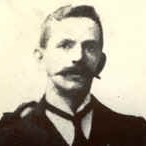
1882 - 1921
Thomas Traynor
Summary
Name:
Thomas TraynorYears Active:
1916 - 1921Birth:
May 27, 1882Status:
ExecutedClass:
MurdererVictims:
2Method:
ShootingDeath:
April 25, 1921Nationality:
Ireland
1882 - 1921
Thomas Traynor
Summary: Murderer
Name:
Thomas TraynorStatus:
ExecutedVictims:
2Method:
ShootingNationality:
IrelandBirth:
May 27, 1882Death:
April 25, 1921Years Active:
1916 - 1921Date Convicted:
April 5, 1921bio
Thomas Traynor was born on 27 May 1882 in the small town of Tullow, County Carlow, Ireland. He grew up in a working-class family and later became a skilled boot maker by trade. Traynor married and had a large family of ten children. At the time of his death, his eldest child was 18 years old and his youngest just five months old.
Traynor lived through a turbulent period in Irish history, marked by increasing calls for independence from British rule. He became actively involved in the Irish nationalist movement and was a committed member of the Irish Republican Army (IRA). His first major involvement was during the Easter Rising of 1916, where he served as part of the Boland’s Mill garrison in Dublin — one of the key strategic points in the city during the uprising. The Rising was ultimately crushed, but it galvanized public support for Irish independence in the years that followed.
After the Rising, Traynor was arrested and interned in multiple prisons, including Frongoch internment camp in Wales, Wakefield Jail, and Mountjoy Jail in Dublin. During one of these imprisonments, he shared a cell with Seán Mac Eoin, another prominent figure in the IRA.
Traynor continued his involvement with the IRA during the Irish War of Independence (1919–1921), serving as a soldier in the armed campaign against British forces. He was not a young rebel seeking adventure, but a 38-year-old father with deep convictions and a readiness to risk everything for the cause of a free Ireland. One of his sons, Frank Traynor, would go on to represent Ireland as a bantamweight boxer at the 1928 Summer Olympics.
murder story
On 14 March 1921, Thomas Traynor was involved in an IRA operation targeting members of the British Auxiliary Division on Brunswick Street in Dublin. He was reportedly acting as part of a lookout team, safeguarding a high-level IRA meeting attended by figures like Seán MacBride. When British forces arrived, a gun battle erupted. During the confrontation, two members of the Dublin Metropolitan Police, including Constable James O'Farrell and Cadet Bernard Beard were killed. An IRA volunteer, Leo Fitzgerald, also lost his life in the clash.
Traynor was captured at the scene and later identified as one of the participants in the armed ambush. According to some reports, he was badly beaten by members of the notorious Igoe Gang, a group of British intelligence agents known for their brutal interrogation tactics.
He was put on trial on 5 April 1921 at Dublin’s City Hall. The case against him was primarily based on his arrest at the scene of a violent ambush that resulted in the death of two British officers. His trial was swift, and given the nature of British military justice during this period, conviction was all but assured.
On 25 April 1921, Thomas Traynor was executed by hanging at Mountjoy Prison in Dublin. He was 38 years old. A British official, Mark Grant-Sturgis, remarked coldly in his journal that Traynor’s execution would not spark much public sympathy, describing him as neither young nor innocent, but a middle-aged man with “a pack of children.”
The very next day, as a direct reprisal, the IRA executed Royal Irish Constabulary District Inspector Gilbert Potter, who had been held hostage by the Third Tipperary Brigade in the hope of preventing Traynor's execution.
Another IRA volunteer, John Donnelly, who had been captured alongside Traynor during the same ambush, was also sentenced to death but later reprieved following the truce between British forces and the IRA in July 1921.